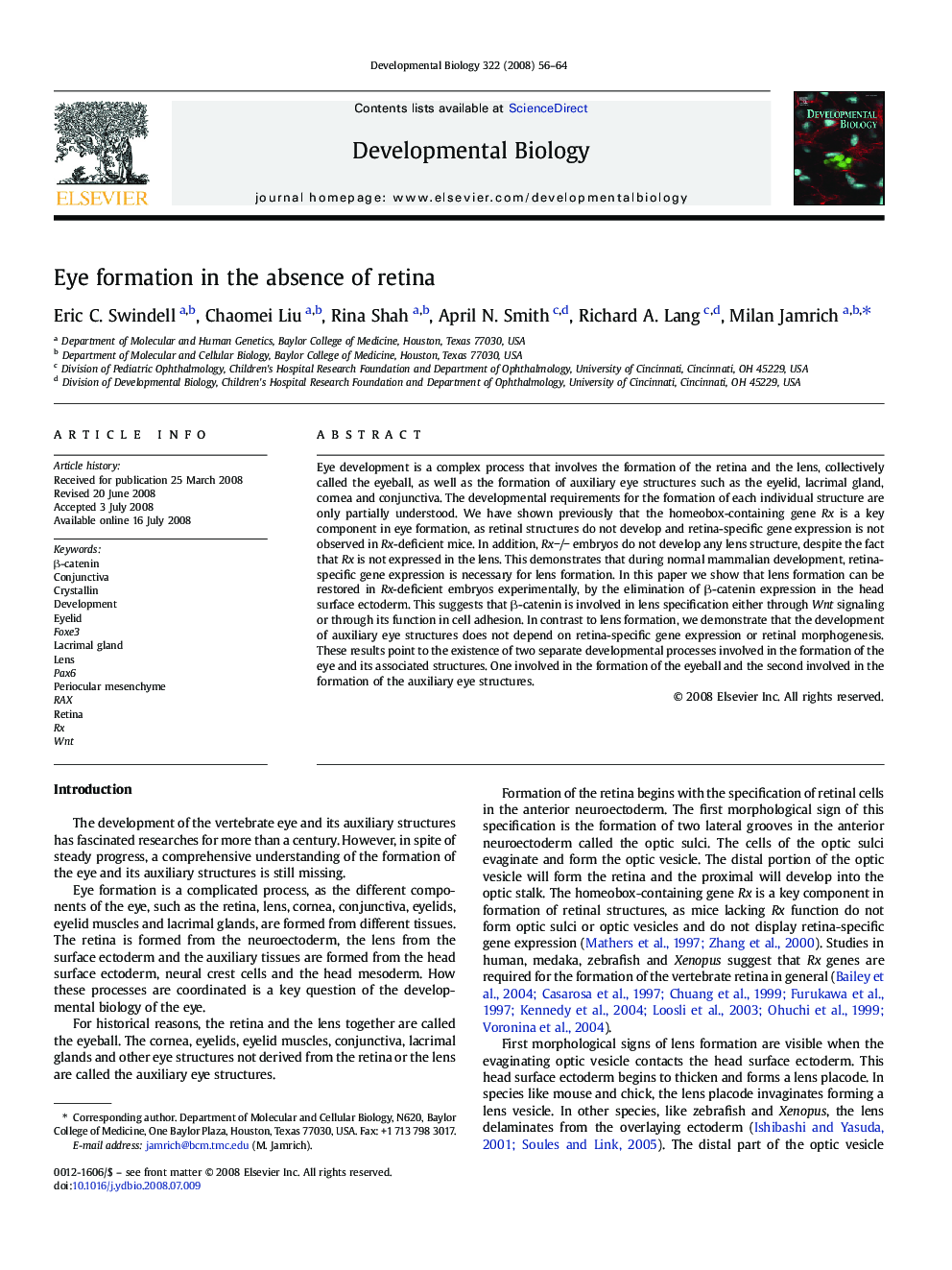| کد مقاله | کد نشریه | سال انتشار | مقاله انگلیسی | نسخه تمام متن |
|---|---|---|---|---|
| 2174453 | 1093800 | 2008 | 9 صفحه PDF | دانلود رایگان |

Eye development is a complex process that involves the formation of the retina and the lens, collectively called the eyeball, as well as the formation of auxiliary eye structures such as the eyelid, lacrimal gland, cornea and conjunctiva. The developmental requirements for the formation of each individual structure are only partially understood. We have shown previously that the homeobox-containing gene Rx is a key component in eye formation, as retinal structures do not develop and retina-specific gene expression is not observed in Rx-deficient mice. In addition, Rx−/− embryos do not develop any lens structure, despite the fact that Rx is not expressed in the lens. This demonstrates that during normal mammalian development, retina-specific gene expression is necessary for lens formation. In this paper we show that lens formation can be restored in Rx-deficient embryos experimentally, by the elimination of β-catenin expression in the head surface ectoderm. This suggests that β-catenin is involved in lens specification either through Wnt signaling or through its function in cell adhesion. In contrast to lens formation, we demonstrate that the development of auxiliary eye structures does not depend on retina-specific gene expression or retinal morphogenesis. These results point to the existence of two separate developmental processes involved in the formation of the eye and its associated structures. One involved in the formation of the eyeball and the second involved in the formation of the auxiliary eye structures.
Journal: Developmental Biology - Volume 322, Issue 1, 1 October 2008, Pages 56–64